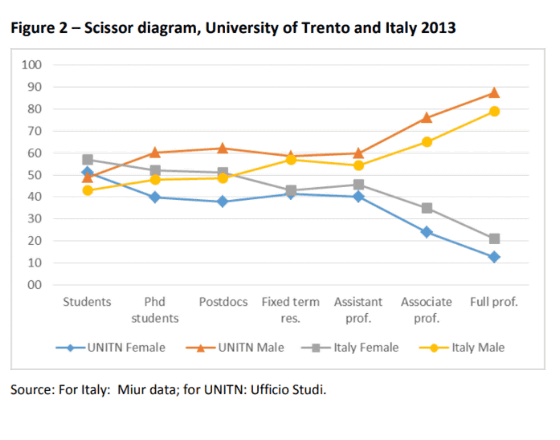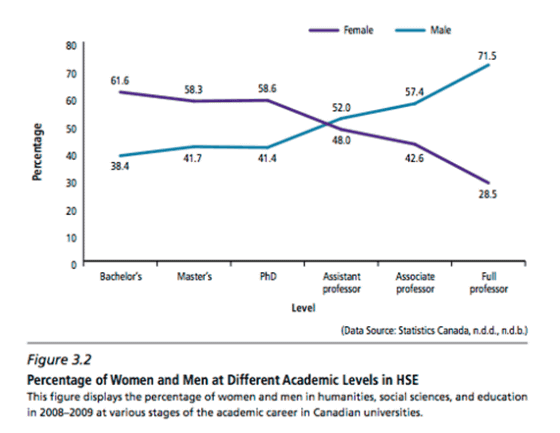Claims that the decline in female researchers is not just 'sex discrimination'

By
In the fields of science, technology, engineering, and mathematics (STEM) , the decline in the number of female researchers has been viewed as an issue , and studies have shown that gender equality reduces the number of female researchers in the STEM field . Karen J. Morenz, who is also a physical chemistry woman researcher, explains why women researchers in the STEM field are steadily declining.
Is it really just sexism? An alternative argument for why women leave STEM
https://medium.com/@kjmorenz/is-it-really-just-sexism-an-alternative-argument-for-why-women-leave-stem-cccdf066d8b1
According to a report from the US National Science Foundation in 2011, only 20.3% of women had a bachelor's degree in physics in 2008 and only 18.6% of women had a doctorate. In chemistry, only 49.95% of women have a bachelor's degree and 36.1% have a doctorate. In contrast, in biology, women accounted for 59.8% of bachelor's degrees and 50.6% of doctoral degrees, a high percentage when compared to the STEM field.
The following graph shows the gender ratios by class at the University of Trent in Italy (UNITN) and universities throughout Italy, as revealed by a survey of educational background and gender disparities in Europe (PDF file) . The vertical axis shows the percentage (%) and the horizontal axis shows the class. From the left, bachelor students, doctoral students, postdoctoral fellows, part-time lecturers, lecturers, lecturers, associate professors, and professors are arranged in this order. At the time of the bachelor's degree, there is not much difference in the gender ratio, and women show a slightly higher proportion, but as the class rises, the proportion occupied by men increases, and at the time of the associate professor a large difference opens You can see that

The same phenomenon occurs in graphs created by gender ratio

'It is widely believed that gender discrimination is the cause of women leaving college, but that is not the case,' said Morenz. In fact, a 2016
According to Mr. Morenz himself, 'At the time of my Ph.D., most women have survived a number of gender discriminations. Demonstrating that he is a very stubborn person who has survived even in the face of difficulties, '' he argues that gender discrimination is not a major cause of female researcher decline. .

By
When Mrs. Morentz independently asked her why she quit her research position, the most frequent reason was 'combining work and family.' A 2016 study on STEM women declined showed that women in STEM research positions tended to be late in marriage and childbirth or remain single. And even if they have children, they tend to have fewer children than non-STEM researchers. There is no difference between men in the STEM field compared to men in the non-STEM field, as seen in women.
Furthermore, in the early 30s, when women's fertility began to decline and the risk of complications during childbirth began to increase for both mothers and children, about 56% of women left their jobs from STEM research in large numbers. (PDF file) the survey results are clear. About 50% of women who leave the STEM field will work for non-profit organizations or government agencies, about 30% will switch to a non-STEM field job that makes it easier to spend time with their family, and about 20% will be dedicated I am a housewife.

By monkeybusiness
'Most scholars and policymakers believe that engaging young women in STEM and addressing gender discrimination in the workplace can improve women's decline in the STEM field. The main reason for leaving a research position is not gender discrimination, but statistics show that balancing work and family is a problem, and despite this, without taking any concrete measures, Ignored because power is more likely not to hire women because they are afraid that they will get pregnant and take parental leave, 'said Morenz.
'It's not to say that gender discrimination is not a problem, I guess, because of the many years of continuous effort, However, at least at the graduate level, it is no longer the biggest obstacle for women in the STEM field, but that doesn't mean that sex discrimination is not an issue. We should look more closely at the issue of how to properly support women who want to do so. '
In fact, as a project to help women with children work in the STEM field, we provided free childcare facilities and provided assistants and technicians so that women could manage the laboratory while caring for their children. Supporting programs are being implemented at the Dana-Farber Cancer Institute in the United States.

By prostockstudio
'I personally believe that the ideal situation is now in place for women seeking research positions. By helping women in the STEM field choose to have a home, more doctors Encouraging women with higher education to take on academic jobs that require higher qualifications, and our entire society benefits from the skills of highly trained and intelligent women, You will have access to innovative solutions to today's challenges, 'says Morenz.
Related Posts:
in Note, Posted by darkhorse_log







